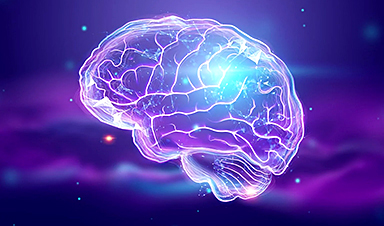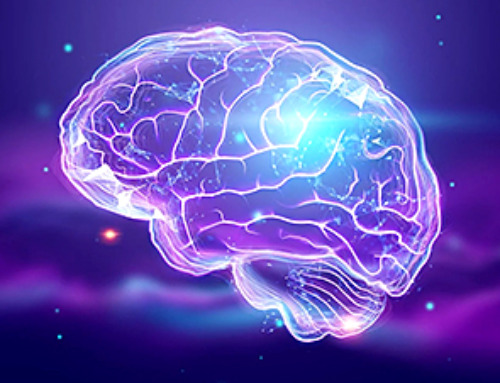Johns Hopkins Medicine researchers have developed a color-coded test that quickly signals whether newly developed nanoparticles—ultra small compartments designed to ferry medicines, vaccines and other therapies—deliver their cargo into target cells. Historically, nanoparticles have a very low delivery rate to the cytosol, the inside compartment of cells, releasing only about 1%–2% of their contents. The new testing tool, engineered specifically to test nanoparticles, could advance the search for next-generation biological medicines. The technology builds upon nanoparticles currently used against cancer and eye disease, and in vaccines for viruses including SARS-CoV-2, the virus that causes COVID-19.
“Many of the current assessment tools for nanoparticles only test whether a nanoparticle reaches a cell, not if the therapy can successfully escape the degradative environment of the endosome to reach inside the cytosol of the cell, which is where the medicine needs to be located for performance,” says Jordan Green, Ph.D., professor of biomedical engineering at the Johns Hopkins University School of Medicine. The new tool was created to track location and nanoparticle release, he said.
Previous research has estimated that only about 1%-2% of nanoparticles “eaten” by cells are able to escape the cellular compartments that trap them to avoid being digested or “spit back out.” In addition to the properties of its cargo, a nanoparticle’s chemical properties determine whether it is accepted by a cell and able to evade its cellular defenses.
To surmount such obstacles to final delivery, Green and his team designed a screening tool that assesses hundreds of nanoparticle formulations on their ability to not just reach a cell, but also how efficiently the nanoparticle can escape with its cargo to reach a cell’s interior.
The test uses mouse cells grown in the laboratory that are genetically engineered to carry a florescent marker called Gal8-mRuby, which shines orange-red when a cellular envelope that engulfs a nanoparticle opens, releasing its cargo into the cell.
Images of the process are then analyzed by a computer program that quickly tracks the nanoparticle location using red fluorescent light and quantifies how effective the nanoparticles are at being released into the cell by assessing the amount of orange-red fluorescent light. Using this technique, a laboratory can screen hundreds of unique nanoparticles for delivery in a few hours, with detailed information about the uptake of the nanoparticles and the delivery of their cargo.
In experiments in mice, Green and his team administered biodegradable nanoparticles carrying mRNA that encoded a gene called luciferase, which makes cells glow. The researchers then tracked whether the mouse cells accepted the gene and began expressing it—lighting up target cells like a lightning bug.
Green’s team found that the top-performing nanoparticles in the cellular tests had a high positive correlation to nanoparticle gene delivery performance in living mice, showing the nanoparticle assay is a good predictor of successful cargo delivery.
In further mouse studies, the researchers discovered that different chemical group combinations in the polymer-based nanoparticles led the nanoparticles to target different tissue types. By analyzing how the particles behaved in the mouse’s body, the researchers found that polymer chemical properties could direct the nanoparticle gene therapy to specific target cells, such as endothelial cells in the lungs or B cells in the spleen.
“By fine-tuning small chemical changes, we can steer a nanoparticle to specific tissues and even specific cells,” said Green. “This would allow us to develop more precisely delivered therapies, which could improve both efficacy and safety.”
Nanoparticle delivery of biological drugs is a growing field, particularly for gene therapies and vaccines.
Other researchers involved in the study include Yuan Rui, David R. Wilson, Stephany Y. Tzeng, Hannah M. Yamagata, Deepti Sudhakar, Cynthia A. Berlinicke and Donald J. Zack of the Johns Hopkins University School of Medicine; Marranne Conge of the Johns Hopkins University School of Medicine and Berea College; and Anthony Tuesca of AstraZeneca.
News
New Once-a-Week Shot Promises Life-Changing Relief for Parkinson’s Patients
A once-a-week shot from Australian scientists could spare people with Parkinson’s the grind of taking pills several times a day. The tiny, biodegradable gel sits under the skin and releases steady doses of two [...]
Weekly injectable drug offers hope for Parkinson’s patients
A new weekly injectable drug could transform the lives of more than eight million people living with Parkinson's disease, potentially replacing the need for multiple daily tablets. Scientists from the University of South Australia [...]
Most Plastic in the Ocean Is Invisible—And Deadly
Nanoplastics—particles smaller than a human hair—can pass through cell walls and enter the food web. New research suggest 27 million metric tons of nanoplastics are spread across just the top layer of the North [...]
Repurposed drugs could calm the immune system’s response to nanomedicine
An international study led by researchers at the University of Colorado Anschutz Medical Campus has identified a promising strategy to enhance the safety of nanomedicines, advanced therapies often used in cancer and vaccine treatments, [...]
Nano-Enhanced Hydrogel Strategies for Cartilage Repair
A recent article in Engineering describes the development of a protein-based nanocomposite hydrogel designed to deliver two therapeutic agents—dexamethasone (Dex) and kartogenin (KGN)—to support cartilage repair. The hydrogel is engineered to modulate immune responses and promote [...]
New Cancer Drug Blocks Tumors Without Debilitating Side Effects
A new drug targets RAS-PI3Kα pathways without harmful side effects. It was developed using high-performance computing and AI. A new cancer drug candidate, developed through a collaboration between Lawrence Livermore National Laboratory (LLNL), BridgeBio Oncology [...]
Scientists Are Pretty Close to Replicating the First Thing That Ever Lived
For 400 million years, a leading hypothesis claims, Earth was an “RNA World,” meaning that life must’ve first replicated from RNA before the arrival of proteins and DNA. Unfortunately, scientists have failed to find [...]
Why ‘Peniaphobia’ Is Exploding Among Young People (And Why We Should Be Concerned)
An insidious illness is taking hold among a growing proportion of young people. Little known to the general public, peniaphobia—the fear of becoming poor—is gaining ground among teens and young adults. Discover the causes [...]
Team finds flawed data in recent study relevant to coronavirus antiviral development
The COVID pandemic illustrated how urgently we need antiviral medications capable of treating coronavirus infections. To aid this effort, researchers quickly homed in on part of SARS-CoV-2's molecular structure known as the NiRAN domain—an [...]
Drug-Coated Neural Implants Reduce Immune Rejection
Summary: A new study shows that coating neural prosthetic implants with the anti-inflammatory drug dexamethasone helps reduce the body’s immune response and scar tissue formation. This strategy enhances the long-term performance and stability of electrodes [...]
Scientists discover cancer-fighting bacteria that ‘soak up’ forever chemicals in the body
A family of healthy bacteria may help 'soak up' toxic forever chemicals in the body, warding off their cancerous effects. Forever chemicals, also known as PFAS (per- and polyfluoroalkyl substances), are toxic chemicals that [...]
Johns Hopkins Researchers Uncover a New Way To Kill Cancer Cells
A new study reveals that blocking ribosomal RNA production rewires cancer cell behavior and could help treat genetically unstable tumors. Researchers at the Johns Hopkins Kimmel Cancer Center and the Department of Radiation Oncology and Molecular [...]
AI matches doctors in mapping lung tumors for radiation therapy
In radiation therapy, precision can save lives. Oncologists must carefully map the size and location of a tumor before delivering high-dose radiation to destroy cancer cells while sparing healthy tissue. But this process, called [...]
Scientists Finally “See” Key Protein That Controls Inflammation
Researchers used advanced microscopy to uncover important protein structures. For the first time, two important protein structures in the human body are being visualized, thanks in part to cutting-edge technology at the University of [...]
AI tool detects 9 types of dementia from a single brain scan
Mayo Clinic researchers have developed a new artificial intelligence (AI) tool that helps clinicians identify brain activity patterns linked to nine types of dementia, including Alzheimer's disease, using a single, widely available scan—a transformative [...]
Is plastic packaging putting more than just food on your plate?
New research reveals that common food packaging and utensils can shed microscopic plastics into our food, prompting urgent calls for stricter testing and updated regulations to protect public health. Beyond microplastics: The analysis intentionally [...]





















